Deborah J. Ross's Blog, page 11
May 20, 2024
[link] Art Holcomb on Steps Toward Becoming a Professional Writer
 I knew Art Holcomb decades ago -- gosh, have we been around that long? -- and always respected his insight into writing and publishing. He's a guest blogger over at Larry Brooks's "Storyfix" and has some interesting things to say. He doesn't address how to write, but rather the equally important question of what attitudes and habits comprise a professional attitude.
I knew Art Holcomb decades ago -- gosh, have we been around that long? -- and always respected his insight into writing and publishing. He's a guest blogger over at Larry Brooks's "Storyfix" and has some interesting things to say. He doesn't address how to write, but rather the equally important question of what attitudes and habits comprise a professional attitude. My favorite is Don't Wait For Perfect. Perfect is the enemy of done. And it's also toxic to the creative space so many of us need -- the self-confidence to try new things, but the insecurity to look critically at what we've done. Being a writer (for me, anyway) is a high-wire act, holding that paradox. Perfectionism slams me into paralysis. I have to be willing to be incredibly imperfect in order to take the risks to be great.
May 17, 2024
Short #BookReviews: The Shop of Lost Things
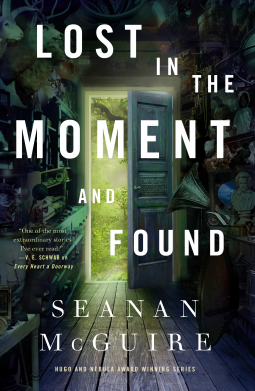
Lost in the Moment and Found, by Seanan McGuire(Tordotcom)
When her father dies, Antsy—too young and playful for herfull name, Antoinette—faces a grim choice: to risk the increasingly creepyattentions of her stepfather, or to run away. Chance and fear drive her througha mysterious door—excuse me, Door—to a Shop of Lost Things. It’s a wondrousplace, the epitome of the magical antique store, filled with strange objectsfrom magical lands. Soon Antsy herself is visiting those places, beginning witha market where blue-furred people trade in luscious pastries. Soon Antsysuspects all is not benign in the Shop as she ages prematurely. There is a costto going through a magical Door, a cost in time she can never get back.
With masterful skill, Seanan McGuire takes us on apoint-of-view evolution from a bewildered young girl, struggling to come toterms with the loss of the father she adored and the increasingly creepyadvances of her new stepfather; to the child adventurer, thrilled by theadventures and mysteries unfolding before her; to the too-soon-grownup,grappling with the loss of innocence and the impossibility of ever going homeagain. The continuity of voice comes across in perfect balance to its maturation.As usual, McGuire imbues her story with compassion, understanding, and rip-roaringaction. And the twist at the end had me both teary-eyed and cheering.
May 13, 2024
Cheering Each Other On
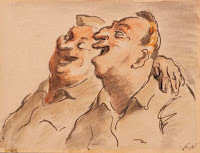
"When someone does something good, applaud!" said Samuel Goldwyn. "You will make two people happy."
The past few years in the science fiction and fantasy communities (no slight to you horror fans, you can have your share) have been rife with insults, denigration of one another's work, and -- not to put too fine a point on it -- downright nastiness. More than once I have wondered why folks who think that tearing down someone else's book will somehow make theirs better. This is not to say there is no place for literary criticism or personal taste. Not every book that's published qualifies as great literature. I've done my share of scratching my head, clueless as to why a book that did nothing for me has made best seller lists. And there are authors I won't read because I find their public statements, actions, or subtext abhorrent. (When Mein Kampf goes off copyright anon, I doubt I'll purchase a copy.) So the discourse about negative reactions to authors and specific books is complex.
I find the reverse to be quite simple. If I enjoyed a book, I like to praise it. Or a movie, or a piece of music, or a painting, or a dance, or any of the thousand other things that light up my day. It might not be perfect, but a thing doesn't have to be flawless to be enjoyable. When I share my private delight with others, I find it makes me even happier. If the other person also loved whatever it is I'm applauding, that's even better. Curious, how human nature works. We all smile together. Our hearts lift.
And of course, whoever created the thing I'm applauding is happy, too. I've been on both sides -- giving and getting applause. How great is that?
The thing about writing is that so much of it is done in solitude, where our fears and self-doubts multiply in the dark. No matter how thick-skinned we tell ourselves we are, we are not immune to gloom. So instead of looking at another writer's success and thinking, "I suck, I'll never be that good" or "There goes my readership" (or reeling under a review or a rejection letter that compared my work unfavorably to a piece by A Bigger Name -- don't laugh, both have happened to me), I remind myself that no matter who wrote it, the world is a better place with this story in it. I'm a happier reader for having found it. Some day, I'll write a story that makes other people this happy. The other author's success shows me that mine is possible. It gives me hope, as well as something to aim for.
May 10, 2024
Short #BookReviews: Four Girls in a Majorly Creepy Town
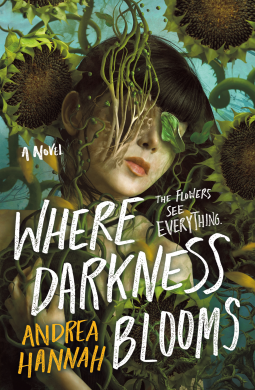
Where Darkness Blooms, by Andrea Hannah (St.Martins/Wednesday)
Bishop, Kansas, appears to be a classic Midwest town, withfields of sunflowers and wind storms that keep everyone hunkered down. ButBishop is no ordinary place, and darker secrets lie beneath. Literally beneath.As in the soil itself, which manifested a lust for human blood a century ago. Sincethen, raging wind storms keep the town’s population from venturing far afield,those fields being endless stretches of sunflowers that seem to be watchingeverything that happens.
Today, four girls have banded together, sharing a dusty,broken-down house after their mothers mysteriously disappear. In addition,equally mysterious deaths—always women—including the girlfriend of Whitney, oneof the girls. The friends have their own secrets: Jude, Whitney’s sister, had afling with her friend Delilah’s boyfriend; Delilah can’t stand anyone’s touch,including the boyfriend’s; and Bo’s perpetual anger hides a trauma she can’t speakof. During the memorial for the missing mothers, the storm reveals a terriblesecret that sets the girls off on a mission to discover what’s really going on.
With the exception of the (very brief) prolog thatestablishes the thirst of the soil for blood, the story kept me turning pages,engaged with the characters, alternately terrified for them, rejoicing in theirstrength and insights, hoping that at least one of them gets a happy ending, andready to strangle the men than keep them in windy chains. All in all, this wasa great read. I’ll be looking out for the author’s next.
May 3, 2024
Book Review: A Tour-de-Force Debut from Emily Tesh
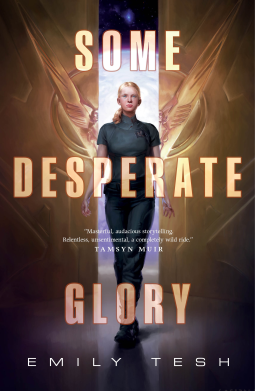 Some Desperate Glory, by Emily Tesh (Tordotcom)
Some Desperate Glory, by Emily Tesh (Tordotcom)After a devastating alien attack destroys Earth, a handfulof survivors cling to the hope of revenge on Gaea Station, a satellite cobbled fromthe few remaining warships. A generation later, young people have been geneticallymodified and rigorously trained to be “warbreed” fighters, huge, strong, and…obedient.Normal human teens are assigned to other tasks churning out babies to keephumankind going. Warbreed Kyr (Valkyrie) has spent her entire life training toface “the Wisdom,” the reality-shaping alien weapon that doomed Earth. Sheexcels in every physical test, she drives her lesser mess-mates mercilessly,and she has no emotional ties to anyone except her brother. She fully expectsto be given a prized post…but Command has other ideas. Instead, her brother issent on a death mission and she is consigned to the Nursery to bear sons forGaea Station until she dies an early death.
At first, I found Kyr a highly unsympathetic character.She’s arrogant, entitled, and generally a self-centered bully. She’sunthinkingly cruel to the helpless young alien whose ship is captured. Inshort, I didn’t like her at all. But I kept reading on the strength of theprose and the hope that she would eventually get her comeuppance. And then theplot spins around in another direction…and yet another…
Refusing her Nursery assignment, Kyr ends up on the run withher brother, the alien, and her brother’s unrequited crush, a brilliant but psychopathiccomputer whiz (who is also a boy, but queer relationships are forbidden on GaeaStation because of the crushing need to increase the human population.)
Their flight takes them to a planet inhabited by both humansand aliens, where lush green, fresh air, blue skies, and joyful play contrastwith the bleak sterility of her previous life. Not only that, she encountersher older sister, who was supposed to be dead, and her nephew, fathered by theautocratic Commander whom Kyr had once worshipped. Faced with the undeniablereality that the universe is vaster and more wonderful than she imagined, Kyrbegins to question everything she has been taught, even her own memories. Shestarts asking who she would be if Earth had not been destroyed or if theCommander had not been a power-hungry tyrant bent on retaliation. If she’dgrown up in an enriched, natural environment. If she’d been allowed to loveanyone—starting with herself.
By this time, I was thoroughly hooked. With each deviationfrom the opening scenario, the entire universe changes—and Kyr with it. Theauthor brilliantly takes us inside each iteration of Kyr, the good and the bad,the memories and the blindnesses. It’s a tour-de-force that kept me turningpages and falling in love with a true heroine.
April 29, 2024
[reprint] Mass extinction and the rise of the dinosaurs
 Eoraptor lunensis lived roughly 230 million years ago, at a time when dinosaurs were small and rare. Jordan Harris courtesy of Kristi Curry Rogers, CC BY-SA Kristi Curry Rogers,
Macalester College
Eoraptor lunensis lived roughly 230 million years ago, at a time when dinosaurs were small and rare. Jordan Harris courtesy of Kristi Curry Rogers, CC BY-SA Kristi Curry Rogers,
Macalester College
It may be hard to imagine, but once upon a time, dinosaurs didn’t dominate their world. When they first originated, they were just small, two-legged carnivores overshadowed by a diverse array of other reptiles.
How did they come to rule?
My colleagues and I recently studied the fossilized bones of the earliest known dinosaurs and their nondinosaur rivals to compare their growth rates. We wanted to find out whether early dinosaurs were somehow special in the way they grew – and if this may have given them a leg up in their rapidly changing world.
Before dinosaurs – the Great DyingLife on Earth was flourishing 250 million years ago. Dinosaurs had yet to evolve. Instead, giant amphibians and sail-backed reptiles called therapsids thrived.
But within a blink of geologic time, in a span of about 60,000 years, scientists estimate 95% of all living things went extinct. Known as the Permian extinction or the Great Dying, it is the largest of the five known mass extinction events on Earth.
Most scientists agree this near total die-off was caused by extensive volcanic activity in modern-day Siberia, which covered millions of square miles with lava. The resulting noxious gases and heat combined to push global temperatures dramatically upward, eventually leading to ocean acidification, a loss of oxygen in ocean waters and a profound ecosystem collapse, both on land and in the ocean.
Only a few lucky survivors made it through.
The survivors and their descendantsIn the ecological vacuum after the mass extinction event, on the stage of a healing Earth, the ancestors of dinosaurs first evolved – along with the ancestors of today’s frogs, salamanders, lizards, turtles and mammals. It was the dawn of the Triassic Period, which lasted from 252 million years ago to 201 million years ago.
Collectively, the creatures that survived the Great Dying were not particularly remarkable. One animal group, known as Archosauria, started off with relatively small and simple body plans. They were flexible eaters and could live in a wide variety of environmental conditions.
Archosaurs eventually split into two tribes – one group including modern crocodiles and their ancient relatives and a second including modern birds, along with their dinosaur ancestors.
This second group walked on their tiptoes and had big leg muscles. They also had extra connections between their back bones and hip bones that allowed them to move efficiently in their new world.
Instead of directly competing with other archosaurs, it seems this group of dinosaur ancestors exploited different ecological niches – maybe by eating different foods or living in slightly different geographical areas. But early on, the dinosaurlike archosaurs were far less diverse than the crocodile ancestors they lived alongside.
Slowly, the dinosaur lineage continued to evolve. It took tens of millions of years before dinosaurs became abundant enough for their skeletons to show up in the fossil record.
 The Ischigualasto Provincial Park in San Juan Province, Argentina, where the earliest dinosaur fossils have been discovered. Kristi Curry Rogers, CC BY-SA
The Ischigualasto Provincial Park in San Juan Province, Argentina, where the earliest dinosaur fossils have been discovered. Kristi Curry Rogers, CC BY-SA The oldest known dinosaur fossils come from an area in Argentina now called Ischigualasto Provincial Park. Rocks there date back to roughly 230 million years ago.
The Ischigualasto dinosaurs include all three dinosaur groups: the meat-eating theropods, the ancestors of giant sauropods and the plant-eating ornithischians. They include Herrerasaurus, Sanjuansaurus, Eodromaeus, Eoraptor, Chromogisaurus, Panphagia and Pisanosaurus.
These early dinosaurs represent only a small fraction of animals found from that time period. In this ancient world, the crocodilelike archosaurs were on top. They had a wider array of body shapes, sizes and lifestyles, easily outpacing early dinosaurs in the diversity race.
It wouldn’t be until closer to the end of the Triassic Period, when another volcanism-induced mass extinction event occurred, that dinosaurs got their lucky break.
The late Triassic extinction event killed 75% of life on Earth. It decimated the crocodilelike archosaurs but left early dinosaurs relatively untouched, paving the way for their rise to dominance.
Before long, dinosaurs went from representing less than 5% of animals on Earth to constituting more than 90%.
Bones tell the story of growthMy collaborators from the Universidad Nacional de San Juan, Argentina, and I wondered whether the rise of dinosaurs may have been underpinned, in part, by how fast they grew. We know, through microscopic study of fossilized bones, that later dinosaurs had fast growth rates – much faster than that of modern-day reptiles. But we didn’t know whether that was true for the earliest dinosaurs.
We decided to examine the microscopic patterns preserved in thigh bones from five of the earliest known dinosaur species and compare them with those of six nondinosaur reptiles and one early relative of mammals. All the fossils we studied came from the 2-million-year interval within the Ischigualasto Formation of Argentina.
 Eoraptor bone tissue under a polarizing light microscope shows evidence of rapid, continuous growth – common to both the earliest dinosaurs and many of their nondinosaur contemporaries. Kristi Curry Rogers, CC BY-ND
Eoraptor bone tissue under a polarizing light microscope shows evidence of rapid, continuous growth – common to both the earliest dinosaurs and many of their nondinosaur contemporaries. Kristi Curry Rogers, CC BY-ND Bones are an archive of growth history because, even in fossils, we can see the spaces where blood vessels and cells perforated the mineralized tissue. When we look at these features under a microscope, we can see how they are organized. The more slowly growth occurs, the more organized microscopic features will be. With quicker growth, the more disorganized the microscopic features of the bone look.
We discovered early dinosaurs grew continuously, not stopping until they reached full size. And they did indeed have elevated growth rates, on par with and, at times, even faster than those of their descendants. But so did many of their nondinosaur contemporaries. It appears most animals living in the Ischigualasto ecosystem grew quickly, at rates that are more like those of living mammals and birds than those of living reptiles.
Our data allowed us to see the subtle differences between closely related animals and those occupying similar ecological niches. But most of all, our data shows that fast growth is a great survival strategy in the aftermath of mass destruction.
Scientist still don’t know exactly what made it possible for dinosaurs and their ancient ancestors to survive two of the most extensive extinctions Earth has ever undergone. We are still studying this important interval, looking at details such as legs and bodies built for efficient, upright locomotion, potential changes in the way the earliest dinosaurs may have breathed and the way they grew. We think it’s probably all these factors, combined with luck, that finally allowed dinosaurs to rise and rule.
Kristi Curry Rogers, Professor of Biology and Geology, Macalester College
This article is republished from The Conversation under a Creative Commons license. Read the original article.
April 26, 2024
Very Short Book Reviews: In the world of Tim Powers, things go seriously pear-shaped
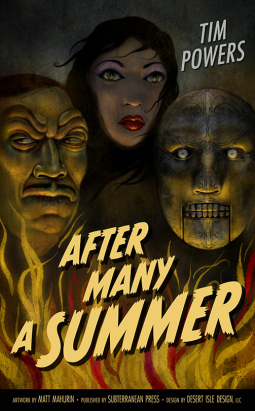 After Many A Summer, by Tim Powers(Subterranean)
After Many A Summer, by Tim Powers(Subterranean)Tim Powers is a master of turning an already weird tale fiveways on its head, upside down, and inside out until it begs for mercy inancient Akkadian. His new short novel, After Many A Summer, is noexception. It begins, as do many of his books, with a semblance of normality: adown-on-his-luck screenwriter, Conrad, accepts a too-good-to-be-true deal froma movie studio: they’ll produce his script for a fabulous sum if he drives a valisearound LA, transferring it from one vehicle to another. What does he have tolose? He figures this is an elaborate scheme for delivering a ransom for akidnapped heiress. He’s sort-of right and very, very wrong. The heiress isindeed being held captive, but the valise contains a centuries-old mummifiedskull that can talk, prophesize, and even alter the course of time itself, andis given to quoting the poet Tennyson. And that’s just the beginning of thingsgoing seriously pear-shaped.
I’ve loved the work of Tim Powers ever since I discovered TheAnubis Gates in 1983, so I was prepared for superb storytelling and majorrevamping of reality. I was not disappointed on either count. The story, takingthe reader further and further from expectations, requires a bit of patience,but the central character is sympathetic enough to act as a naïve if likeableguide. Highly enjoyable (and an object lesson).
April 22, 2024
Sleepy Mind, Great Ideas... Maybe
 Why is it that juicy story ideas, as well as brilliant solutions to plot problems, pop into my mind when I'm dozing off? All right, that's a rhetorical question. We all know that as we drift into sleep, our brain activity changes. Logic and other constraints on creativity shut down and we make unusual and often wonderful connections between otherwise disparate bits of memory, thoughts, etc. The point of my question is not why this happens, but what to do about the inevitable waking up and being unable to remember.
Why is it that juicy story ideas, as well as brilliant solutions to plot problems, pop into my mind when I'm dozing off? All right, that's a rhetorical question. We all know that as we drift into sleep, our brain activity changes. Logic and other constraints on creativity shut down and we make unusual and often wonderful connections between otherwise disparate bits of memory, thoughts, etc. The point of my question is not why this happens, but what to do about the inevitable waking up and being unable to remember.Catherine Mintz playfully suggests that "it is a law of writing that wonderful things appear as soon as you are too tired to make notes."
Keeping a pen and paper at bedside is a logical remedy. I've done this for a dream journal, which has a slightly different objective, and I've done it for writing ideas at various times over the years. I don't any more, and here's why.
When I read over my notes in the cold, harsh light of day (not to mention an awake brain, with critical faculties online), those "brilliant" ideas fail the brilliancy test. It could be that they are indeed brilliant, but I'm not awake enough to write them down properly. It could also be that the very act of writing them down requires me to shift mental functioning (i.e., to wake up) enough to "lose" the creative connections. It could also be that they are indeed not all that brilliant, they only seem so at the time because I'm too sleepy to have any objective judgment.
I don't think any of these explanations is helpful. Moreover, it's entirely possible that the very act of writing down those sleeptime ideas and then struggling to put them into usable form is counterproductive. Consider daydreams. I believe they are most enjoyable when they have no other purpose than to let our imaginations wander as they will, indulging in whatever interests or pleases us at the moment. I also believe that this is a valuable part of the creative process, at least for writing. Don't know about sculpture or music.
Sleepytime inspirations are much the same -- illogical, bizarre, evanescent, apart from rational critical analysis. This does not mean they are without value. It's important to give our minds (and our creative muses) time to play. Play means we don't expect a utilitarian result. Play is for its own sake. But...
The very process of play, the freedom to do so, feeds into the "simmering soup pot" of ideas, images, connections, from which we draw our stories. Play enriches our inner landscapes, populating them with characters and events that connect with us. So what if we can't remember the next morning? Somewhere, something of value remains, waiting to emerge, perhaps in a totally different form.
I try not to fret about losing that one-and-only perfect solution. I remind myself that nothing creative is ever wasted... or lost. Instead of trying to hold on to a night's musings (muse-ings), I can gently direct my thoughts to a particular story or character or situation, night after night, trusting that if whatever arises in response is good and true, it will come back stronger every time. That makes it more likely to poke its head up when I am awake and focused -- oh yes, I remember you. Then I will have something to work with, using both my sleepytime mind and my rational alert mind in cooperative mode, neither trying to coerce or manage the other.
Sweet dreams!
The image is by French painter Pierre Puvis de Chavannes (1824-1898)
April 19, 2024
Very Short Book Reviews: An Angels and Demons Murder Mystery in the Weird West
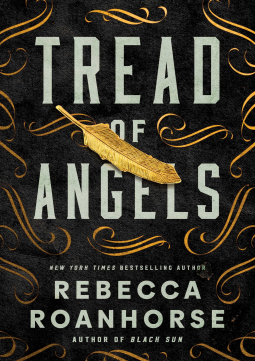
Tread of Angels, by Rebecca Roanhorse
What a marvelous page-turner of an “Angels and Devils in theWeird West” murdeer mystery adventure! Rebecca Roanhorse does a brilliant jobdropping the reader into an Old-West-That-Never-Was, a town that mines divinityas an energy-source mineral, populated by the Fallen descendants of demons andruled by the snobbish ruling-class human Elects and their police arm, theVirtues.
In the late 1880s. a cardsharp named Celeste and her sisterMariel, an immensely talented singer, eke out a living. They’re both Fallen,although Celeste has managed to hide her outcast status. She’s also trying toforget an intensely passionate affair with a demonlord. Her world shatters whenMariel is arrested for the murder of a Virtue, and the only way to save her isfor Celeste to become an untrained defense attorney, a “Devil’s Advocate” or advocatusdiaboli. To make matters worse, she has only a short time, not nearlyenough to investigate, and she’s managed to put herself in debt to her demonlover.
The story swept me up on the first page and didn’t let gountil the surprising, ambivalent-but-satisfying conclusion. I especially admiredhow Roanhorse plomped me into her world without big chunks of exposition. Instead,she uses character, action, and nuanced detail to construct a world as seenthrough the eyes of an unreliable but highly sympathetic protagonist.
Highly recommended.
April 15, 2024
Writer's Round Table: Pros Give Advice on Writer's Block
 A few years ago, a friend wrote poignantly about what it's like to be blocked. I asked some pro writer friends for words of encouragement.
A few years ago, a friend wrote poignantly about what it's like to be blocked. I asked some pro writer friends for words of encouragement.This is from a well-known, NYTimes-best-selling author:
WRITER'S BLOCK
I am sittinghere looking at a fic I have not touched since 2007. I have 135K done, including the last scene...or,about 2/3 of the total fic. I am ALSOsitting here looking at a novel that was due three years ago, for which I havesomething similar to an outline and the first 50K written (only 100K to go,right?)
I've beenwriting fanfic and profic since the 80s, and dealing with blocked, derailed,and MIA stories for most of that time. Hereare some of the strategies that have worked for me. (NOTE: some of these ideas aremutually-exclusive, because every writer writes differently.)
1. WELCOME TOTHE GULAG: Block out a specific time and place where you do the same thingevery day: sit in front of the screen and make words come. Doesn't matter what you write, or even if youdon't write. Just be there doing nothingelse (no shopping, no reading AO3, no social media) for that one or two hours(no more) each and every day (same Bat-time, same Bat-channel). Eventually your brain gives up and you get towrite what you want to write.
1A. Ifabsolutely nothing else will come to your fingers, choose a favorite book (orlongfic) and retype it.
2. FACE THEMUSIC: Between day job and commute (long) I was really bushed when Writing Timearrived in the evening. I just didn'thave the energy—but I did have a deadline. Solution? ROCK'N'ROLLBAY-BEE!!! I wrote two novels to"Bad To The Bone". Just thatone track. On infinite repeat. Loud. So pick a piece of music, declare it your writing music, and hit"Repeat" on iTunes.
2A: Earphonesare a great help. Use the sport kindthat leave your ears free.
3. WELCOME TOTHE MACHINE: When I would dry up working on a piece—and we are talking YEARS insome cases—it was often because I was trying to take it in the wrongdirection. I learned to recognize thatfeeling when it came and take a step back. (You can either wait for inspiration to come—I know! I know!—or try tonegotiate with your subconscious. Or,yanno, try to REASON your way through to the answer.)
3A. Sometimesswitching to another project will help.
4. PRESENTCOMPANY: 95% of all fic is written in the present tense, for reasons thatutterly escape me (even though I do it too). Try taking your blocked piece and changing it to past tense. Or first person. Anything to get The Muse—AKA yoursubconscious—awake and grumbling. (Whenyou have annoyed it enough it usually gets back to work. Nobody knows how much annoying is the exactright amount, though.)
5. THE WALLPAPERIS ALSO A CHARACTER: Back in the beginning, when typewriters ruled the earth. Imade a solemn vow not to stop for the night before I had two pages (500 words). And when nothing else would come, I describedthe background. Or the weather. Or the furniture. (Amazingly, all those descriptions didn'tlook out of place when the book was done.)
5A: Thecorollary to this is THE MAGIC TCHOTCHKE: Every story needs one importantand well-described item. It might be amagic sword, a 1967 Chevy Impala hardtop, a big stone ring built by Ancient astronauts. Find out which it is in your story and showit some love. And if your story doesn'thave a magic tchotchke yet, consider adding it.
6. INERTIACREEPS (MOVING UP SLOWLY): If you know what comes next, tell yourself. Use any words you need to for writing downthe information. Sometime this is calleda scene-by-scene breakdown. It is veryfamiliar to the "treatment" for a film (most good books onscreenwriting will show examples of treatment style). Once you have a version of what happens, youcan poke at it to see if it's the "real for true" version. Then you are one step closer to finishing thestory.
7. EURIPEDES,YOUR PANTS ARE READY: There are essentially two kinds of writer: the Pantser,and the Outliner (I'm both. Sue me.) The Pantser begins a work with a vague ideaof where it might be going and an enthusiasm for the journey, and not muchmore. The Outliner wants a roadmap, aGPS, and the location of every Rest Stop along the road before beginning. The takeaway here is that BOTH METHODS WORKWONDERFULLY WELL. Except if you're aPantser who's trying to follow a detailed outline. Or an Outliner who's decided to just go withthe whole Inspiration thing. Figure outwhich kind you are, and nurture that writing-self.
8. LOOSE LIPSSINK SHIPS (THE "I WILL GO DOWN WITH THIS SHIP" REMIX): Writing takesemotional energy. So does talking aboutyour WIP. If you deny yourself theoutlet of talking about your story while it's in progress, you might just findthat (since you are looking forward to all those lovely comments) this givesyou enough oomph to unlock your Muse.
And don't forgetThe Broccoli Test, The Bechdel Test, interviewing your characters, and thestory's Blooper Reel. (I'm hopingsomebody else will cover these in depth?)
Good Luck!
--- Dejah Vue, Writer of TwoWorlds
If you'd like to contribute to the discussion, email me at mail@deborahjross dot com.



